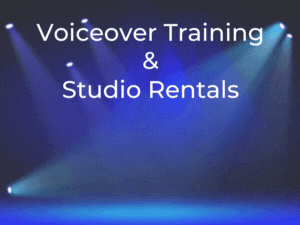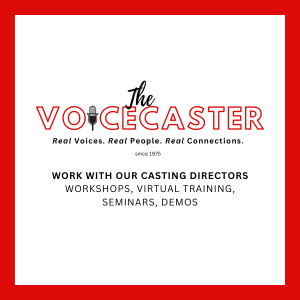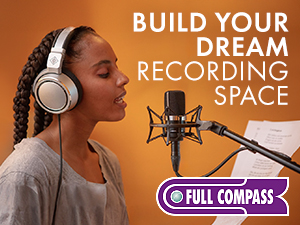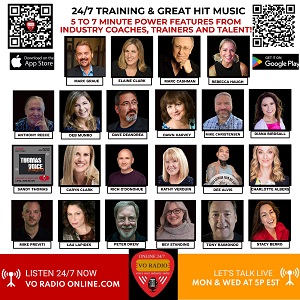|
For Your First In-Person Voice Over Audition: Five Crucial Tips  By William Williams By William WilliamsVoice Actor & Coach Aliso Creek Productions So youíve taken voice over classes, learned every minute detail about copy interpretation, voice tone, a natural delivery and sincerity. You've placed your voice over demo reel in the hands of every casting director and agent in town. All of this hard work and preparation is about to pay off. The phone rings and youíve just been called for your first audition! This is where the rubber meets the road. You know you have the talent and skills to be an amazing voice actor and the only thing standing in your way is that pesky audition. But donít fret, here are five simple tips to ensure youíll have a great audition ... 1. Vocal Strength The audition actually starts the night before. Just like a singer who will perform the next day, you want to start preparing your instrument as soon as you know you have an audition. And for your instrument to be in tip top shape you will want to lay off any beverages or activities that will cause any dryness or stickiness in your mouth and throat. Refrain from drinking milk, sodas and smoking, which can all affect your voice. Drink plenty of water to stay hydrated during the audition. While you donít need to be a complete mute, attempt to refrain from talking too much (or screaming for your favorite football team), as you will want your vocal cords to be nice and strong for the following day. SLEEP, NOT STRESS You should also make sure to hit the hay nice and early. This will set you up for success by making sure you can arrive early to look through the script, work on a few vocal exercises to warm your voice up, and not have to rush to your appointment. If you are in a stressed state of mind, this will translate into your audition. 2. Dress For Success While you do want to appear professional, you
donít have to wear your best Armani suit. Business casual is the way to go, particularly when starting out in the voice over industry. You want to feel confident and comfortable, but ... WHAT TO AVOID Your favorite jogging suit may imply that you are indifferent about the quality of your work. Avoid wearing any noisy clothing that may be picked up by the microphone. For women and men, avoid wearing any dangling earrings or jewelry that will clang together. And try not to wear any material that will make swishing noises while you are acting out your lines. 3. Script Analysis Depending on when you receive the script, you will have a small amount of time to read through it to get comfortable. A simple thing you can do to prepare is bring a pencil! A pencil, and not a pen, will allow you to scribble and erase notes as you read through, giving yourself visual cues as to where you should place more emphasis on certain words, pauses you might include, phonetic pronunciations, etc. WHAT'S THE MESSAGE? Now that you are armed with your pencil and script, give it an initial read through or two. With this first read-through, try to get a feel for what the message the advertiser is trying to convey. Once you can feel that vibe, get creative! Give yourself a few different options of sounds you think might work with the copy. Everyone loves options, and so will the director. 4. Microphone Position OK, you are in the sound booth and it is
your time to shine. You feel fantastic and you know exactly how you are going
to deliver the lines. This is where you will continue to set yourself up for success. Donít be intimidated by all of the fancy equipment. Stand where the mic will best perform for you. FIND SWEET SPOT As you have most likely learned in your voice over workshops, there is a sweet spot when working with a mic, where you are not too close and yet not too far. This sweet spot will pick up all of the nuances your voice has to offer without any pops or clicks and will enhance the best frequencies in your voice. Take a moment to find that sweet spot that will best represent your sound. But don't touch the mic! If adjustments are needed, the engineer will do the positioning. 5. Teamwork While you may feel like you are directly in the spotlight of the sound booth, realize that you have a teammate. The director on the other side of the sound booth window is there to work with you. While running through the script, you can let the director know you have a couple different approaches - but at the same time, make sure to listen to his direction. The director will be able to take your unique sound and mold it into what the advertisers are looking for. PREPARE FOR MARATHON Following these five simple techniques will ensure that you give the best audition possible. However, realize that working in the voice over industry is a marathon and not a sprint. With more and more options popping up for the average Joe to break into the industry, there is more opportunity. Make sure you take advantage of all possible voice over clients, from traditional ad agency auditions to industrial and online work. And then, being prepared for each audition will pay off! ABOUT WILLIAM ... William Williams is a voice over talent with national, regional and local credits. He has also been a voice over coach in Los Angeles for over 15 years where he teaches regular classes, does private coaching, and produces voice over demos at Aliso Creek Productions, in Burbank. He also offers online voice over classes and coaching. Email: william@alisocreek.net Web: http://alisocreek.net |
|
|
Get your bi-weekly dose here ... all things VO!
Email alerts to new VoiceOverXtra articles
With Sean Daeley and Paul Stefano - check it out!
On Michael Langsner's Voice-Over Roadmap Podcast
As of the NEW website launch, 03/22/2012






.png)



Also, unidirectional mics have a "proximity effect" where they overemphasize low frequencies as you get closer to the mic. So if you move closer and farther away, the sound will not only get louder and softer but will also get more tonal change (more and less bassy).
So it's like golf... keep your head still. You can gesture, wave your arms, etc., but use the "beam of light" concept to find the sweet spot and then stay there.
By the way, if you have a home studio my advice is "DO try this at home." Turn on the mic, put on some headphones and talk. Move you head from side to side to hear the difference. Move forward and back and listen. Get really close to the mic and listen how bassy it gets. Train your ears to hear your best mic position so if you are at a studio you can adjust your position quickly to produce your best sound. Good luck and Keep Talking!
Bettye Zoller
Voicesvoices.com
Here in Tokyo, I do the majority of projects in studios with a director and sound engineers present. The mic is usually on a boom and is arranged for reading copy laid on the table. (That's what they teach in the Japanese announcer schools.)
I hold the copy up at eye level and thus the mic always needs to be adjusted. So in comes an engineer to reposition the mic.
Once I adjusted the pop filter - just angled the pop filter a little. After the session my agent told me an engineer nearly freaked out about it.
In Japan, we sit in the sound booth, not stand. (A standing set-up is used for anime and game voices and sometimes for multi-role voiceovers.)
You can find the sweet spot during the test/sound check. Sometimes that's not suitable, so, unfortunately, the first reads become the sweet-spot search. (Obviously, you need to be wearing headphones.)
Don't forget to confirm the cue points in the script before you head into the booth.
If time codes are not on the script, it's a good idea to confirm the timing for the particularly short and long sections of copy.
One question lingers: How does one identify the microphone's sweet spot. You suggest a sort of trial and error procedure. But would that not require the help of someone monitoring you in the control room?